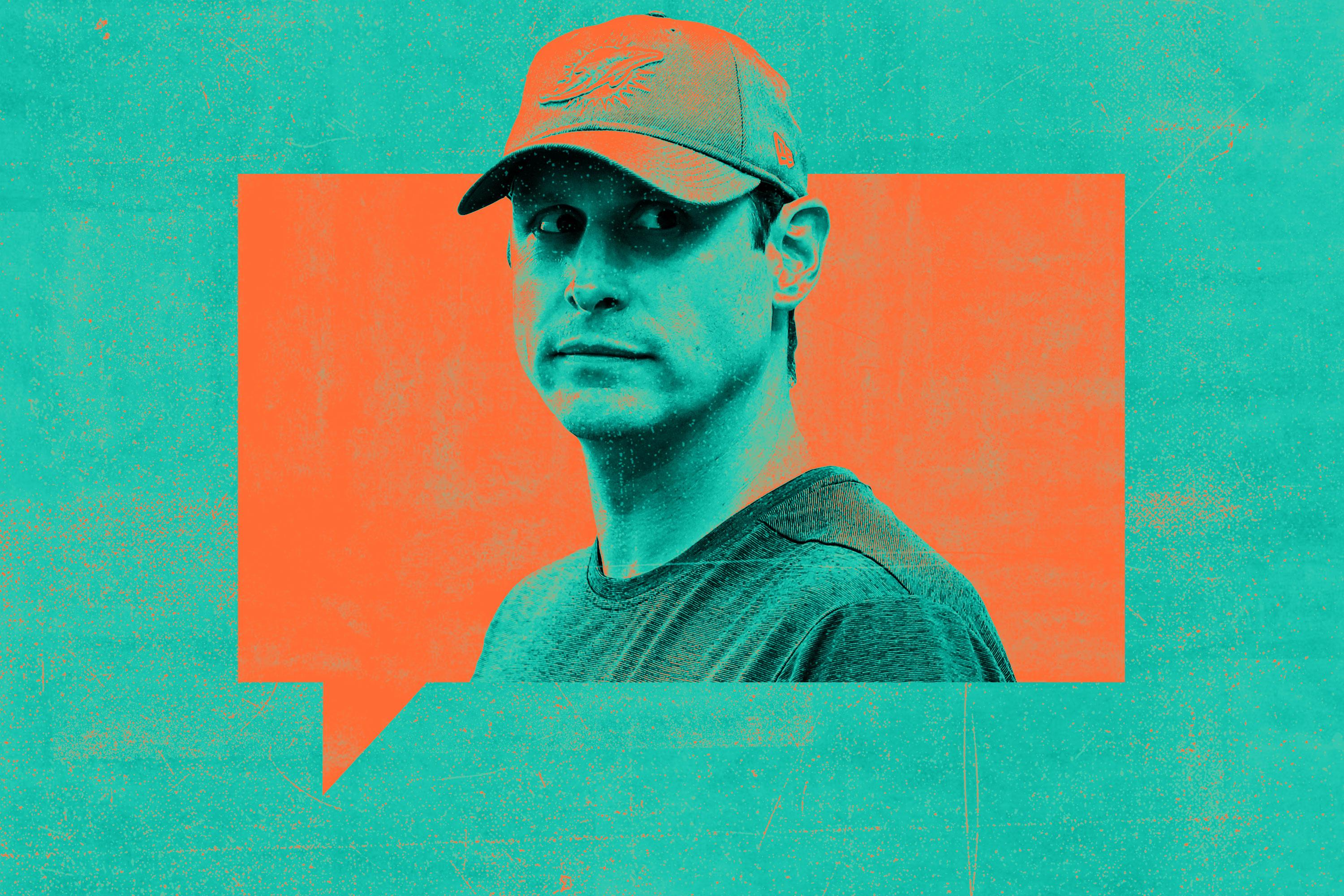
It’s that time of year when some NFL teams have started looking toward next season. As each club is eliminated, The Ringer will examine what went right, what went wrong, and where the franchise could go from here. Today it’s the Dolphins, who were eliminated from playoff contention after a 17-7 loss to the Jaguars.
What Went Right
Miami’s season will be remembered for the Miami Miracle, but their season can be explained by a different play two months earlier. Against the Chicago Bears in Week 6, Brock Osweiler bounced the ball off a defender and into the arms of a wide-open Kenny Stills.
On paper, that 35-yard completion for a first down on third-and-11 in overtime is a great play, but those who watched it knew it was dumb luck. That dichotomy was Miami’s season in a nutshell. All seven of Miami’s wins this season were by eight points or less, giving them a sparkling 7-1 record in single-possession games. So in terms of wins and losses, almost everything went right for Miami this year where it could have.
As far as positives the Dolphins can take into the offseason, a couple of solid players emerged for the team this year. Cornerback Xavien Howard proved to be one of the better cornerbacks in football in his third season. Before his season-ending hip injury, receiver Albert Wilson looked like one of the best open-field runners in football. Wilson leads all wide receivers in yards per route run among receivers with at least 30 targets. That’s a low threshold, but it’s not a fluke: Directly behind Wilson are Julio Jones, Michael Thomas, Amari Cooper, T.Y. Hilton, Tyreek Hill, and Keenan Allen. Between Howard and Wilson, the Dolphins have a promising young player on each side of the ball.
What Went Wrong
History suggests single-possession games are a toss-up. As far as talent goes, this Miami team is closer to a 4-11 squad than a 7-8 one, and the underlying numbers agree. Miami entered Week 16 23rd in points scored, 29th in total yards, 30th in first downs, 32nd in plays run. They have turned exactly half of their 28 red zone drives into touchdowns, which is tied for the sixth-lowest rate in the league. They’re even worse on third down, where they convert less than a third of the time (30.9 percent) which is 31st in the league. They’re 29th in average drive time, ahead of only the Jets, Browns, and Cardinals. They rank 19th in offensive DVOA, and they have the least consistent offense in the league by that metric. The defense might be worse. Their defense is 27th in points allowed, 30th in yards allowed, and 31st in sacks, only in front of the Raiders, who are on track for the second-fewest sacks of any team in the 21st century.
There’s some excuses Miami can point toward. Center Daniel Kilgore and guard Josh Sitton landed on injured reserve, which may explain why Miami’s pass-blocking ranks 30th in the league per Football Outsiders and Ryan Tannehill is tied for the league lead in percentage of dropbacks ending in a sack. Receiver DeVante Parker waged a proxy war for targets with head coach Adam Gase. Running back Kenyan Drake was inexplicably buried behind Frank Gore on the depth chart even as he and Kalen Ballage seemed like more capable players. Safety Reshad Jones, the second-highest paid safety in the league, played through a torn labrum this season and finished as the 55th graded safety in the league per Pro Football Focus.
The team will have to decide what to do with Gase, who was hired in 2016 as an offensive guru. Under three years of Gase, Miami’s point differential has ranked 24th, 29th, and 29th in the league, and Miami hasn’t finished better than 24th in yards. He may get them to .500 this year, but this team was barely better than the Jay Cutler–led Dolphins of last year, and all signs are trending to them getting worse in 2019.
Free Agency
Drew Brees, Matt Stafford, Kirk Cousins, Andrew Luck, and Tom Brady: Those are the only players in the NFL with a higher 2019 cap hit than Ryan Tannehill, who will be 31 next year and count for $26.6 million against the Dolphins cap. Through 15 weeks Tannehill is 29th in passing yards per game, 31st of 33 qualifying quarterbacks in net yards per attempt, and, after this week, is 42-45 in his career as a starter. Whether it’s Tannehill’s performance or his salary, something’s gotta give.
Miami has a projected $14 million of cap space next year, but they could save nearly $19 million of cap space by designating Tannehill as a post–June 1 release. It may not make sense for them to do so—it’s unclear if they could replace Tannehill—but the team is treading water with him under center. If Gase wants to prolong his job security, it may involve moving on from Tannehill this offseason, whether in free agency or grabbing a quarterback in this year’s draft.
If the team sticks with Tannehill, a wise move would be cutting pass rusher Robert Quinn, who has $13 million in non-guaranteed money left on the final year of his deal.
The Draft
Miami is 31st in sacks and enters a draft rich with pass rushers. Unless the team is amenable to drafting a quarterback to replace Tannehill (probably the wisest move for the franchise), the Dolphins should find someone who can get after opposing passers. Mississippi State’s Montez Sweat, Florida’s Jachai Polite, and Florida State’s Brian Burns would all be solid options for the Dolphins to disrupt the backfield.

